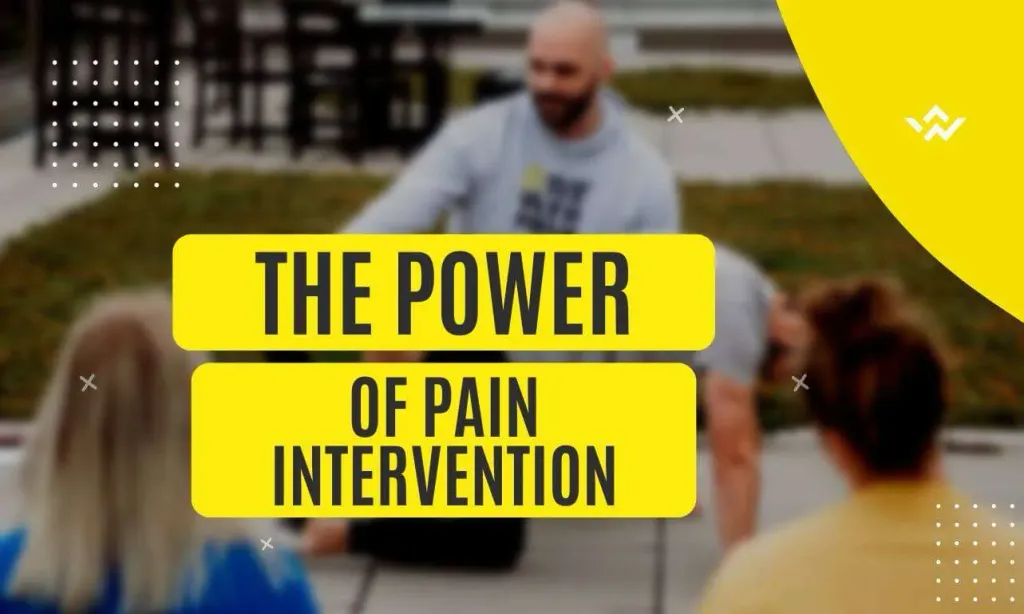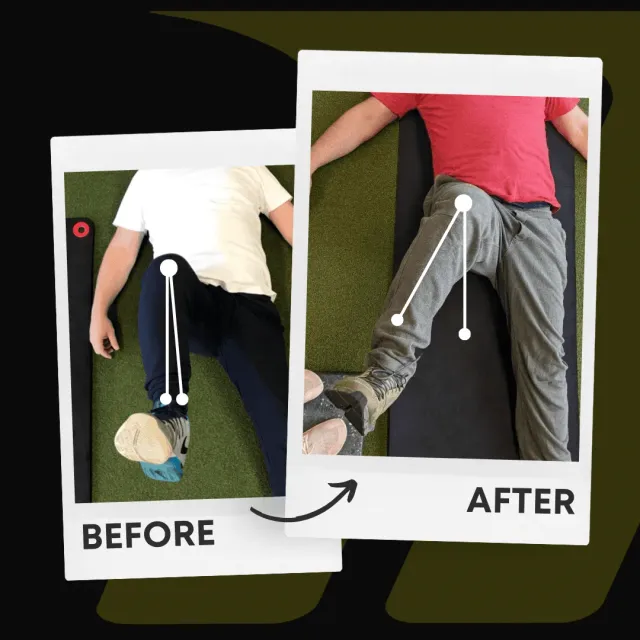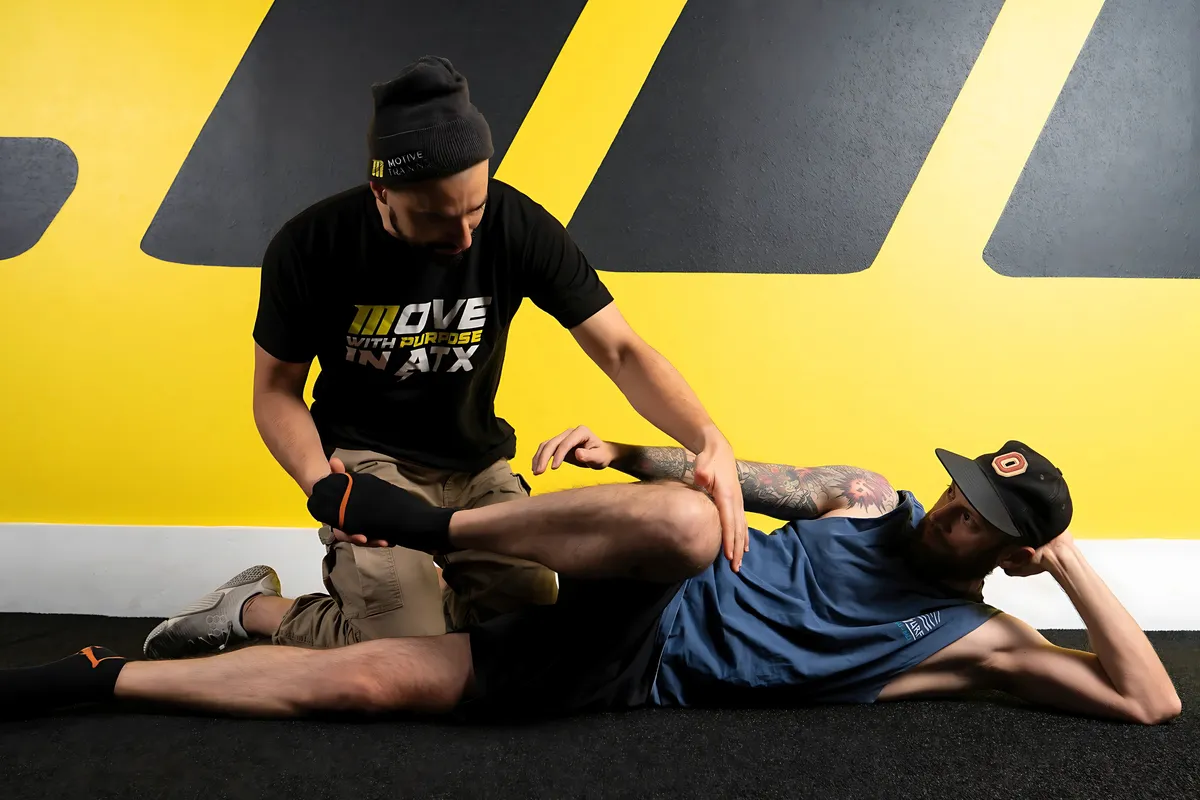The Power of Pain Intervention
April 13, 2023 | Mobility

Living with chronic pain can be a challenging and debilitating experience affecting every aspect of your life. Don’t believe me? Ask someone with chronic pain what it’s like to just wake up in the morning. It’s brutal.
Unfortunately, pain can interfere with your ability to work, socialize, and engage in activities you enjoy. It can also lead to depression, anxiety, and other mental health issues. Fortunately, there are ways to manage chronic pain, and one of the most effective is pain intervention.
Understanding Chronic Pain and Its Impact
Before we dive into pain intervention, it’s essential to understand what chronic pain is and how it can impact your life. You can also read more about pain in our article, Lessons In Pain.
Chronic pain is defined as pain that lasts for three months or longer. Various factors, including injury, illness, and nerve damage, can cause it. Chronic pain can be mild or severe, intermittent or constant. Other symptoms, such as fatigue, sleep disturbances, and mood changes, can accompany it.
Living with chronic pain can be challenging and affect your physical, emotional, and social well-being. For example, chronic pain can limit your ability to perform daily activities, impact your relationships with others, and lead to frustration, anger, and hopelessness. Therefore, managing chronic pain is essential to minimize its impact on your life.
What is Pain Intervention?
Pain intervention is a broad term that refers to various treatments and techniques designed to manage chronic pain. The goal of pain intervention is to reduce pain, improve function, and enhance quality of life. We often associate pain intervention with medication or medical treatments, but it can include massage, exercise, physical therapy, emotional/mental therapies, and more.
Pain intervention techniques can be divided into two categories: invasive and non-invasive. Invasive techniques involve the insertion of needles or other instruments into the body. Examples of invasive techniques include nerve blocks, spinal cord stimulation, and radiofrequency ablation. Non-invasive techniques do not involve puncturing the skin or entering the body. Examples of non-invasive techniques include massage therapy, acupuncture, and transcutaneous electrical nerve stimulation (TENS).
Different Types of Pain Intervention Techniques
There are many different pain intervention techniques, each with its benefits and drawbacks. Some of the most common pain intervention techniques include:
Nerve Blocks
Nerve blocks involve the injection of medication into or around a nerve to block pain signals. Nerve blocks can treat various conditions, including chronic headaches, back pain, and neuropathic pain. Generally speaking, this should be used as a last resort if you can’t manage pain through other methods.
Spinal Cord Stimulation
Spinal cord stimulation involves the insertion of a small device under the skin that sends electrical impulses to the spinal cord. This can help block pain signals and reduce chronic pain. This is less invasive, more joint-friendly, and safer than nerve blocks.
Radiofrequency Ablation
Radiofrequency ablation involves the use of heat to destroy nerve tissue that is transmitting pain signals. This can provide long-lasting pain relief and improve function. However, like nerve blocks, radiofrequency ablation should only be used as a last resort. Consult with your doctor before seeking any of the more aggressive pain treatments.
Massage Therapy
Massage therapy involves the manipulation of soft tissues to promote relaxation and reduce pain. It can treat various conditions, including chronic pain, headaches, and fibromyalgia. Massage therapy has been used for centuries to manage pain and is quite effective (1).
Acupuncture
Acupuncture involves the insertion of thin needles into specific points on the body to stimulate the body’s natural healing processes. It can be used to treat a variety of conditions, including chronic pain, migraines, and arthritis. However, keep in mind that acupuncture seems to help release nerve-blocking hormones, so the effects are generally temporary (2). That’s not to say it isn’t helpful, but it can’t be relied upon as a cure.
Pain Management Strategies
In addition to pain intervention techniques, you can use many other strategies to manage chronic pain. Some of the most effective pain management strategies include:
Exercise
Regular exercise can help reduce pain and improve function. Here at Motive Training, we take a full-body approach to exercise, ensuring our clients understand the ins and outs of their bodies. Most exercise programs try to work around pain or fail to understand it, to begin with, whereas we will help you tackle it head-on. If you’re interested in learning more about our assessment process, check out our FRA page.
Mind-Body Techniques
Mind-body techniques such as meditation, deep breathing, and mindfulness can help reduce pain and improve mental health. You’ve seen this surge on social media recently for a reason: it works.
Diet and Nutrition
Eating a healthy diet rich in fruits, vegetables, lean proteins, and nutrient-dense fats can help reduce inflammation and improve overall health. However, each person should take an individualized approach to their diet. Sometimes things we deem healthy and nutritious can cause further gut irritation and inflammation.
Sleep
Getting enough sleep is essential for managing chronic pain. In addition, good sleep hygiene practices, such as going to bed and waking up at the same time each day, and avoiding screens before bed, can help improve sleep quality.
Tips for Managing Chronic Pain
Managing chronic pain can be challenging, but there are many things you can do to make it easier. Here are some tips for managing chronic pain:
Stay Active
Regular exercise can help reduce pain and improve function. Getting people moving pain-free is what we do best, so if you’re having any issues, check out some of our other articles or reach out directly.
Practice Self-Care
Taking care of your mental health and well-being is essential for managing chronic pain. Practice self-care activities such as meditation, deep breathing, and mindfulness.
Avoid Triggers
Identifying and avoiding triggers that worsen your pain can help manage your symptoms. Common triggers include stress, static postures or movements, poor sleep, and maybe even certain foods. This is where people struggle the most because they don’t remove the things that cause pain to begin with. One of our tenets is No Pain = More Gain for this reason. So, make sure you’re going out of your way to remove pain triggers.

Be Mindful of Your Body
Pay attention to your body and how it feels. Don’t push yourself too hard; take breaks when you need them.
Seek Help When Needed
Don’t be afraid to seek help when you need it. Talk to your doctor, a pain management specialist, a qualified personal trainer, or a mental health professional if you struggle to manage your pain.
The Importance of Seeking Professional Help
Managing chronic pain can be challenging, and it’s essential to seek professional help when needed. A pain management specialist can help you develop a personalized plan that addresses all aspects of your life. They can also provide information about pain intervention techniques and help you decide which methods are right for you.
In addition to seeking help from a pain management specialist, it’s also essential to seek help from a mental health professional if you are struggling with depression, anxiety, or other mental health issues. Living with chronic pain can be challenging, and taking care of your mental health and well-being is essential.
Conclusion – Taking Control of Your Chronic Pain
Pain intervention is a powerful tool for managing chronic pain and can provide long-lasting relief. By creating a comprehensive pain management plan, practicing self-care, and seeking help when needed, you can take control of your chronic pain and live a more fulfilling life.
If you’re struggling with chronic pain, don’t suffer in silence. Talk to your doctor about pain intervention and pain management strategies that can help you manage your symptoms. With the proper support and resources, you can take control of your chronic pain and live a more fulfilling life.
References
- Massage for Pain: An Evidence Map
- Methodological challenges in design and conduct of randomised controlled trials in acupuncture
Written by

Motive Training Staff
We’ll teach you how to move with purpose so you can lead a healthy, strong, and pain-free life. Our headquarters are in Austin, TX, but you can work with us online by signing up for KINSTRETCH Online or digging deep into one of our Motive Mobility Blueprints.

